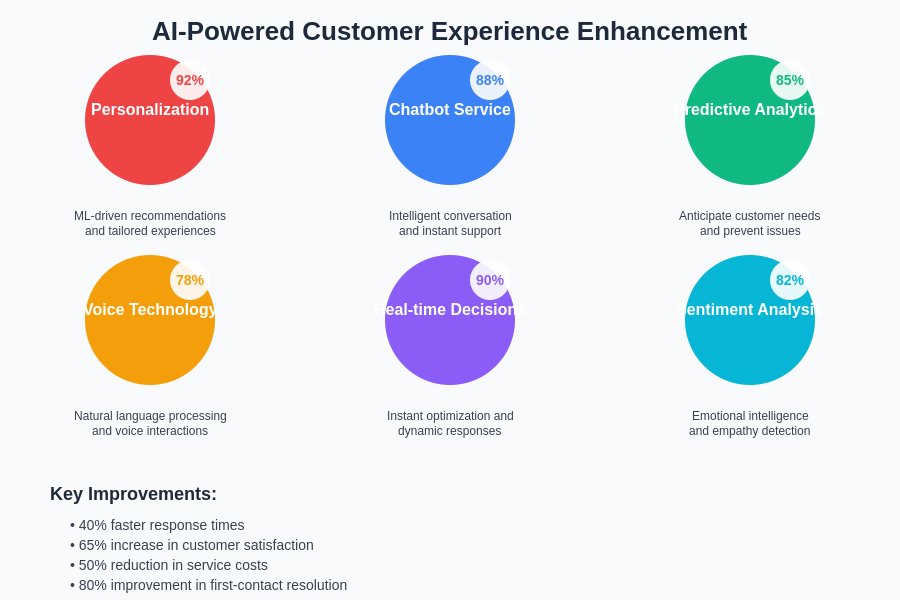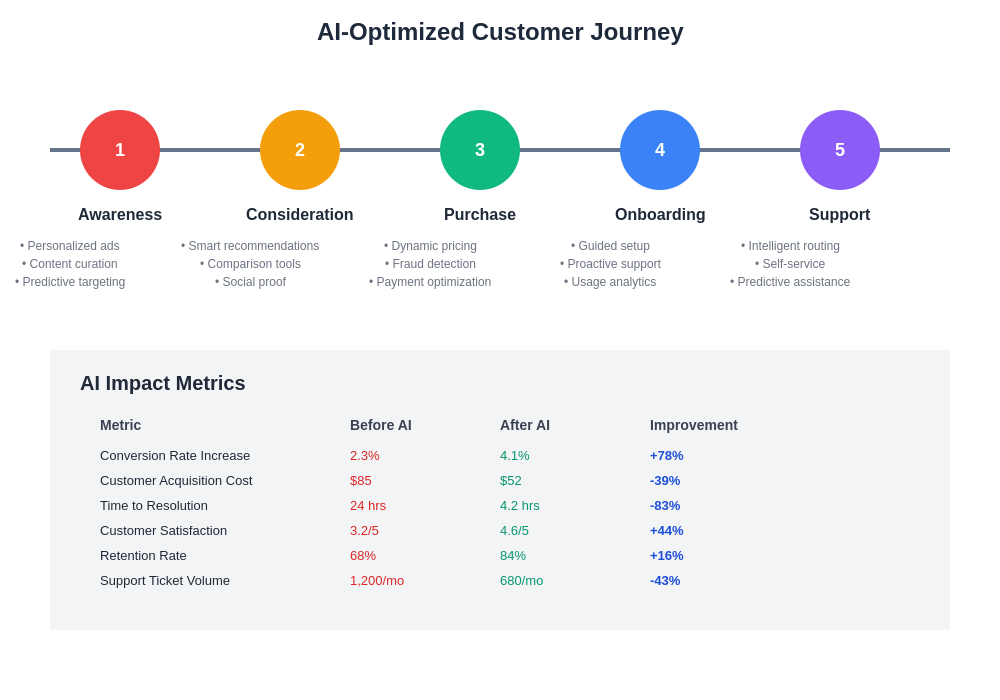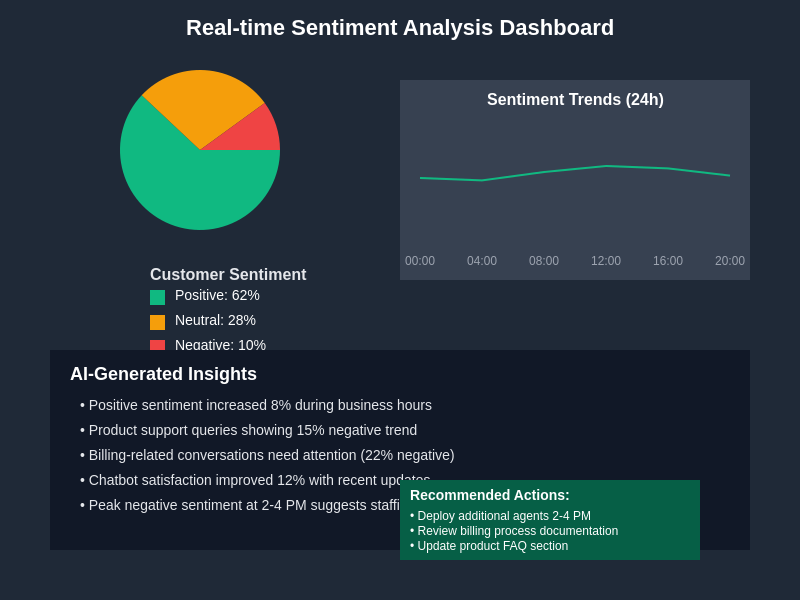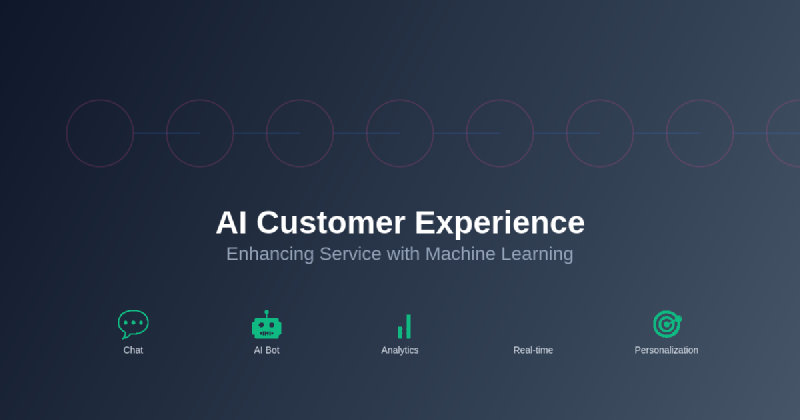The customer experience landscape has undergone a profound transformation with the integration of artificial intelligence and machine learning technologies, fundamentally reshaping how businesses interact with their customers and deliver value across every touchpoint of the customer journey. This technological revolution has enabled organizations to move beyond traditional reactive customer service models toward proactive, personalized, and predictive customer engagement strategies that anticipate needs, resolve issues before they escalate, and create seamless experiences that drive loyalty and satisfaction.
Explore the latest AI trends transforming business operations to understand how cutting-edge technologies are reshaping customer interactions and service delivery across industries. The convergence of AI and customer experience represents more than technological advancement; it embodies a fundamental shift toward customer-centric business models that leverage data-driven insights to create meaningful, lasting relationships between brands and their audiences.
The Evolution of Customer Experience Through AI
The traditional customer experience paradigm relied heavily on human agents, standardized processes, and reactive problem-solving approaches that often resulted in inconsistent service quality, lengthy resolution times, and limited scalability. Artificial intelligence has disrupted this model by introducing intelligent automation, predictive analytics, and personalization capabilities that transform every aspect of customer interaction from initial contact through post-purchase support and relationship management.
Machine learning algorithms now process vast amounts of customer data to identify patterns, preferences, and behaviors that inform decision-making across marketing, sales, and service functions. This data-driven approach enables businesses to anticipate customer needs, personalize interactions, and deliver contextually relevant experiences that resonate with individual preferences while maintaining operational efficiency and scalability across diverse customer segments.
The impact extends beyond mere automation to encompass sophisticated understanding of customer sentiment, intent prediction, and behavioral analysis that enables businesses to create more meaningful connections with their audiences. This intelligent approach to customer experience management has resulted in improved customer satisfaction scores, increased retention rates, and enhanced lifetime value metrics across organizations that have successfully implemented AI-powered customer experience strategies.
Intelligent Chatbots and Virtual Assistants
Conversational AI has emerged as one of the most visible and impactful applications of machine learning in customer experience, with intelligent chatbots and virtual assistants now handling millions of customer interactions daily across websites, mobile applications, and messaging platforms. These AI-powered systems have evolved far beyond simple rule-based responses to incorporate natural language processing, contextual understanding, and sophisticated dialogue management capabilities that enable them to handle complex queries and provide personalized assistance.
Modern AI chatbots leverage advanced natural language understanding to interpret customer intent, extract relevant information, and provide accurate responses while maintaining conversational flow that feels natural and engaging. Machine learning enables these systems to continuously improve their performance by learning from each interaction, identifying successful resolution patterns, and adapting their responses to better serve customer needs over time.
The integration of chatbots with backend systems, customer databases, and business applications has created seamless experiences where customers can complete transactions, access account information, track orders, and receive personalized recommendations without human intervention. This automation not only improves efficiency and reduces operational costs but also provides customers with immediate assistance available around the clock, regardless of time zones or business hours.
Experience advanced AI capabilities with Claude for sophisticated natural language processing and reasoning that can enhance customer service applications with intelligent conversation management and contextual understanding. The evolution of conversational AI continues to push boundaries in creating more human-like interactions while maintaining the scalability and consistency that businesses require for effective customer service delivery.
Personalization Through Machine Learning
Personalization has become a cornerstone of modern customer experience strategy, with machine learning algorithms analyzing customer behavior, purchase history, preferences, and contextual data to deliver tailored experiences that resonate with individual needs and expectations. This level of personalization extends across all customer touchpoints, from personalized product recommendations and content curation to customized pricing strategies and targeted communication campaigns.
Machine learning models process multiple data sources including browsing patterns, transaction history, demographic information, and real-time behavior to create comprehensive customer profiles that inform personalization decisions. These algorithms can identify subtle patterns and correlations that human analysts might miss, enabling businesses to deliver highly relevant experiences that feel intuitive and valuable to customers while driving engagement and conversion rates.
The sophistication of modern personalization engines extends to dynamic content optimization, where AI systems continuously test and refine content presentation, messaging, and user interface elements to maximize engagement and satisfaction for different customer segments. This real-time optimization ensures that each customer interaction is tailored to their specific context, preferences, and stage in the customer journey, creating experiences that feel uniquely crafted for individual users.
Predictive personalization takes this concept further by anticipating future customer needs and preferences based on historical data and behavioral patterns. Machine learning algorithms can predict what products a customer might be interested in, when they are likely to make a purchase, or what type of support they might need, enabling businesses to proactively address customer needs before they are explicitly expressed.
Predictive Analytics for Customer Insights
The power of machine learning in customer experience extends beyond reactive service delivery to encompass predictive analytics that enable businesses to anticipate customer behavior, identify potential issues, and optimize experiences before problems occur. Predictive models analyze historical data, customer interactions, and external factors to forecast future outcomes and inform strategic decision-making across all aspects of customer relationship management.
Customer churn prediction represents one of the most valuable applications of predictive analytics, where machine learning algorithms identify customers at risk of leaving based on behavioral indicators, engagement patterns, and satisfaction metrics. This early warning system enables businesses to implement targeted retention strategies, address underlying issues, and strengthen relationships before customers decide to switch to competitors.
Predictive analytics also enhances inventory management, demand forecasting, and resource allocation by anticipating customer needs and market trends. Machine learning models can predict seasonal fluctuations, identify emerging preferences, and optimize supply chain operations to ensure product availability while minimizing waste and operational costs that ultimately impact customer satisfaction.
The integration of predictive insights into customer service workflows enables support teams to prepare for incoming inquiries, prioritize high-risk customers, and allocate resources more effectively. This proactive approach to customer service management results in faster resolution times, improved customer satisfaction, and more efficient utilization of support resources across the organization.

The comprehensive transformation of customer experience through AI encompasses multiple dimensions of service delivery, from initial engagement and personalization through predictive analytics and proactive support. This holistic approach creates synergies between different AI capabilities that amplify the overall impact on customer satisfaction and business performance.
Real-Time Decision Making and Optimization
Machine learning enables real-time decision making that transforms customer interactions by providing instant access to relevant information, personalized recommendations, and optimal response strategies. Real-time AI systems process streaming data from multiple sources to make split-second decisions that enhance customer experiences while they are actively engaging with business systems and services.
Dynamic pricing strategies powered by machine learning algorithms adjust prices in real-time based on demand patterns, customer behavior, inventory levels, and competitive factors. This sophisticated approach to pricing optimization ensures that customers receive fair value while businesses maximize revenue and maintain competitive positioning in dynamic market environments.
Real-time fraud detection and security monitoring protect customers from unauthorized activities while minimizing friction for legitimate transactions. Machine learning models analyze transaction patterns, device characteristics, and behavioral indicators to identify suspicious activities instantly, enabling businesses to protect customers while maintaining smooth user experiences for normal operations.
Content and product recommendation engines leverage real-time data processing to update suggestions based on immediate customer behavior, ensuring that recommendations remain relevant and engaging throughout extended browsing sessions. This dynamic approach to recommendation generation increases engagement rates and conversion probabilities by responding to evolving customer interests and preferences in real-time.
Omnichannel Integration and Consistency
AI-powered customer experience platforms create seamless omnichannel experiences by integrating customer data, interaction history, and preferences across all touchpoints including websites, mobile applications, social media, email, phone, and in-store interactions. Machine learning algorithms ensure that customer context and conversation history are maintained regardless of which channel customers choose to use for their interactions.
Intelligent routing systems use AI to direct customer inquiries to the most appropriate channels, agents, or automated systems based on complexity, urgency, customer preferences, and available resources. This optimization ensures that customers receive the most effective assistance while maximizing operational efficiency across different service channels and support teams.
Cross-channel personalization maintains consistency in messaging, offers, and experiences regardless of where customers interact with the business. Machine learning models synchronize customer profiles and preferences across all systems to ensure that personalization remains coherent and relevant whether customers are browsing online, using mobile applications, or interacting with customer service representatives.
The integration of AI across channels also enables sophisticated customer journey mapping and optimization, where machine learning algorithms analyze cross-channel behavior patterns to identify optimal paths to conversion, common pain points, and opportunities for experience enhancement that span multiple touchpoints and interaction types.
Leverage advanced research capabilities with Perplexity to stay informed about emerging AI technologies and customer experience trends that can enhance your business strategies and implementation approaches. The rapid evolution of AI capabilities requires continuous learning and adaptation to maintain competitive advantages in customer experience delivery.
Voice Technology and Natural Language Processing
Voice-enabled customer service represents a rapidly growing application of AI technology, with natural language processing enabling customers to interact with businesses using spoken language through smart speakers, mobile applications, and phone systems. Advanced speech recognition and natural language understanding capabilities allow these systems to process complex queries, understand context, and provide accurate responses using conversational interfaces.
Voice analytics powered by machine learning algorithms analyze customer calls to extract insights about satisfaction levels, emotional states, and service quality indicators. This analysis provides valuable feedback for improving service delivery while identifying training opportunities for customer service representatives and optimization possibilities for automated systems.
The integration of voice technology with existing customer service workflows creates multi-modal experiences where customers can seamlessly switch between voice, text, and visual interfaces depending on their preferences and situational requirements. This flexibility enhances accessibility and user experience while maintaining consistent service quality across different interaction modalities.
Sentiment analysis of voice interactions enables real-time emotional intelligence in customer service, where AI systems can detect frustration, satisfaction, or confusion in customer voices and adjust their responses accordingly. This emotional awareness creates more empathetic and effective customer interactions that address both functional and emotional customer needs.
Data-Driven Customer Journey Optimization
Machine learning algorithms analyze customer journey data to identify patterns, bottlenecks, and optimization opportunities across the entire customer lifecycle from awareness through advocacy. This comprehensive analysis enables businesses to understand how customers move through different stages of engagement and what factors influence their decisions and satisfaction levels at each point.
Customer journey mapping powered by AI provides detailed insights into customer behavior across multiple touchpoints, revealing how different channels and interactions contribute to overall experience quality and business outcomes. This data-driven approach to journey optimization enables targeted improvements that address specific pain points and enhance positive experiences.
Behavioral segmentation using machine learning creates dynamic customer groups based on actual behavior patterns rather than traditional demographic categories. These behavioral segments enable more precise targeting and personalization strategies that align with how customers actually interact with businesses rather than assumptions about their preferences and needs.
Attribution modeling enhanced by AI helps businesses understand the relative impact of different touchpoints and interactions on customer satisfaction and conversion outcomes. This understanding enables more effective resource allocation and optimization strategies that focus on the most influential aspects of the customer experience.

The intelligent optimization of customer journeys through AI creates feedback loops that continuously improve experience quality by learning from customer interactions and outcomes. This iterative approach ensures that customer experience strategies evolve with changing preferences and market conditions.
Automated Customer Service and Support
Intelligent automation has transformed customer service operations by handling routine inquiries, processing simple transactions, and providing instant support for common issues while escalating complex cases to human agents when necessary. This hybrid approach combines the efficiency and availability of AI systems with the empathy and problem-solving capabilities of human representatives.
Ticket classification and routing systems use machine learning to automatically categorize incoming support requests and direct them to appropriate teams or agents based on content analysis, urgency assessment, and resolution requirements. This intelligent routing reduces response times and ensures that customers receive assistance from the most qualified resources available.
Knowledge management systems powered by AI continuously update and optimize self-service resources based on customer queries, successful resolution patterns, and emerging issues. These systems ensure that help documentation, FAQs, and troubleshooting guides remain current and relevant while identifying gaps in available resources that require attention.
Automated follow-up and satisfaction monitoring systems track customer interactions after resolution to ensure that issues are fully addressed and customers are satisfied with the service received. This proactive approach to quality assurance enables continuous improvement in service delivery while demonstrating ongoing commitment to customer success.
Emotional Intelligence and Sentiment Analysis
Advanced AI systems now incorporate emotional intelligence capabilities that enable them to understand and respond appropriately to customer emotional states during interactions. Sentiment analysis algorithms process text, voice, and behavioral signals to assess customer satisfaction, frustration levels, and emotional needs, enabling more empathetic and effective service delivery.
Real-time emotion detection during customer interactions allows AI systems to adjust their communication style, escalate issues when customers become frustrated, or provide additional support when confusion is detected. This emotional awareness creates more human-like interactions that address both functional and emotional customer needs effectively.
Sentiment tracking across customer interactions provides valuable insights into service quality trends, recurring issues, and opportunities for experience enhancement. Machine learning algorithms analyze sentiment patterns to identify systemic problems, successful service approaches, and areas where additional training or resources might be beneficial.
The integration of emotional intelligence into AI customer service systems enables more nuanced and contextually appropriate responses that demonstrate understanding of customer concerns and emotions. This capability helps build trust and rapport between customers and AI systems while maintaining the efficiency and scalability benefits of automated service delivery.

The sophisticated analysis of customer emotions and sentiment patterns provides actionable insights that inform both immediate service responses and long-term customer experience strategy development. This emotional intelligence capability represents a significant advancement in creating more human-centered AI customer service solutions.
Implementation Strategies and Best Practices
Successful implementation of AI-powered customer experience solutions requires careful planning, stakeholder alignment, and phased deployment strategies that minimize disruption while maximizing value creation. Organizations must consider technology infrastructure, data quality, staff training, and change management requirements when implementing AI customer experience initiatives.
Data preparation and quality management form the foundation of effective AI customer experience systems, requiring comprehensive data collection, cleaning, and integration processes that ensure machine learning algorithms have access to accurate and relevant information for training and operation. This foundational work is critical for achieving desired performance levels and maintaining system reliability over time.
Staff training and change management initiatives help customer service teams understand how to work effectively with AI systems, leverage insights for improved service delivery, and maintain human touch points where they add the most value. This human-AI collaboration approach ensures that technology enhancement complements rather than replaces human expertise and empathy.
Continuous monitoring and optimization processes enable organizations to track AI system performance, identify improvement opportunities, and adapt to changing customer needs and preferences. This iterative approach to AI implementation ensures that customer experience solutions remain effective and aligned with business objectives over time.
Measuring Success and ROI
Comprehensive measurement frameworks for AI customer experience initiatives encompass both quantitative metrics such as response times, resolution rates, and customer satisfaction scores, as well as qualitative indicators including customer feedback, employee satisfaction, and brand perception measures. These multi-dimensional measurement approaches provide complete pictures of AI impact on customer experience quality and business performance.
Customer satisfaction and Net Promoter Score improvements often represent the most visible indicators of successful AI customer experience implementation, with businesses typically seeing measurable improvements in these metrics within months of deployment. These improvements translate directly into increased customer retention, higher lifetime value, and positive word-of-mouth recommendations that drive business growth.
Operational efficiency gains from AI implementation include reduced service costs, improved agent productivity, and more effective resource utilization across customer service operations. These efficiency improvements enable businesses to handle higher volumes of customer interactions while maintaining or improving service quality, creating scalable competitive advantages.
Return on investment calculations for AI customer experience initiatives must consider both direct cost savings and indirect benefits such as increased customer retention, improved conversion rates, and enhanced brand reputation. The long-term value creation from AI-powered customer experience often exceeds initial implementation costs by substantial margins when properly executed.
Future Trends and Emerging Technologies
The future of AI customer experience continues to evolve rapidly with emerging technologies such as advanced natural language processing, computer vision, augmented reality, and neural networks that will further enhance personalization capabilities and create new interaction modalities. These technological advances promise even more sophisticated and intuitive customer experience solutions.
Conversational AI systems are becoming increasingly sophisticated with the ability to maintain context across extended interactions, understand complex queries, and provide nuanced responses that rival human communication capabilities. These advances will enable more natural and effective customer service interactions across various channels and use cases.
Predictive analytics capabilities continue to advance with more accurate forecasting models, real-time decision making, and proactive customer service approaches that anticipate needs before customers express them. These predictive capabilities will enable businesses to move from reactive to anticipatory customer service models that exceed customer expectations.
Integration with Internet of Things devices, wearable technology, and smart home systems will create new opportunities for contextual customer service that understands environmental factors, usage patterns, and situational needs. These connected experiences will provide unprecedented levels of personalization and convenience for customers across various industries and use cases.
The democratization of AI technology through improved accessibility, reduced costs, and simplified implementation processes will enable smaller businesses to leverage sophisticated customer experience capabilities that were previously available only to large enterprises. This democratization will drive innovation and competition across all market segments while raising overall customer service standards.
Disclaimer
This article is for informational purposes only and does not constitute professional advice. The views expressed are based on current understanding of AI technologies and their applications in customer experience management. Readers should conduct their own research and consider their specific requirements when implementing AI-powered customer experience solutions. The effectiveness of AI implementations may vary depending on specific use cases, organizational requirements, and customer demographics.
